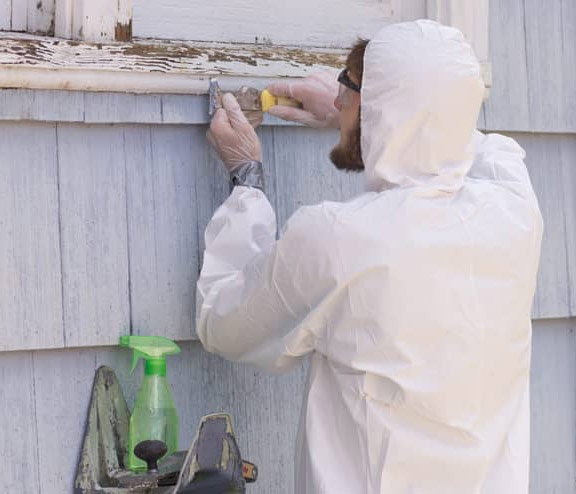Ideal Practices for Ensuring Safe and Complete Lead Violation Reduction
Attending to lead infraction reduction needs a multi-faceted approach to guarantee both safety and security and compliance. It's the final clearance procedure, including thorough inspections and research laboratory screening, that absolutely verifies a lead-free setting, making certain long-lasting security. How do these practices adjoin to ensure extensive lead abatement?

Preliminary Assessment
Conducting an initial analysis is an essential primary step in lead offense abatement. This phase incorporates an in-depth assessment of the residential or commercial property to recognize the visibility, degree, and specific areas of lead-based risks. Certified experts, such as certified lead examiners or risk assessors, need to carry out a thorough site inspection, using tools like X-ray fluorescence (XRF) analyzers to precisely spot and gauge lead focus in paint, dirt, dirt, and water.
The analysis must additionally include a review of the structure's background, previous reports, and any kind of grievances or wellness issues reported by passengers - Lead Removal Contractors. Recording the findings diligently is vital, as these documents form the basis for establishing a reliable abatement method. A thorough evaluation additionally involves sampling and research laboratory analysis, which are vital to validate the visibility of lead and guide subsequent activities
In addition, it is crucial to connect the results transparently to all stakeholders, including residential property proprietors, tenants, and regulative authorities. By making sure that the first analysis is conducted with precision and rigor, professionals can lay a solid foundation for a targeted and effective lead abatement process, inevitably safeguarding public wellness and guaranteeing conformity with governing requirements.
Appropriate Containment
Proper control is essential to stop the spread of lead pollutants throughout abatement activities. Efficiently handling containment reduces the threat of lead dirt and particles migrating to non-work locations, therefore safeguarding both the environment and people outside the prompt job zone. To achieve correct control, a closed barrier of plastic sheeting must be developed around the job location, making sure all seams and edges are firmly secured. Lead Removal Contractors. This barrier should extend from flooring to ceiling and be taped to avoid any leakages.

Routine evaluations of the control area are necessary to examine for breaches or weak points in the barrier. Any kind of identified concerns ought to be without delay dealt with to maintain the honesty of the containment. By sticking to these practices, abatement tasks can efficiently regulate lead contamination and reduce involved health and wellness threats.
Worker Defense
Ensuring employee defense is critical throughout lead abatement jobs to protect against work direct exposure to hazardous lead bits. Crucial steps consist of using individual protective equipment (PPE) such as respirators, handwear covers, and full-body suits particularly designed to block lead dirt and fumes. Employees should undergo comprehensive training on the appropriate usage and upkeep of PPE, including fit testing for respirators to ensure maximum effectiveness.
Engineering controls, such as neighborhood exhaust ventilation systems, are important in decreasing air-borne lead concentrations in the workplace. Management controls must additionally be applied, including limiting the duration of exposure and turning workers to minimize private direct exposure times. Normal clinical security and organic surveillance are indispensable for early detection of lead absorption, enabling prompt treatment and therapy.
In addition, developing a purification method is essential. Employees have to adhere to rigid purification procedures before breaks and at the end of their shift to stop lead dust from being carried outside the workplace. This consists of detailed hand and face cleaning with lead-specific cleaner and see this altering out of contaminated clothing.
Meticulous Cleaning
Preserving a risk-free work environment expands past worker protection and incorporates thorough clean-up to moved here guarantee lead particles are extensively gotten rid of from the site. The process of precise cleanup is critical in protecting against the recontamination of the mellowed out area and safeguarding both existing and future residents.
To achieve a thorough clean-up, all workplace should be methodically decontaminated. This involves using specialized HEPA (High-Efficiency Particulate Air) vacuum and wet-wiping techniques to record and remove great lead dust that might have worked out on surface areas. It is necessary to clean up all horizontal surfaces, consisting of floors, home window sills, and kitchen counters, along with vertical surfaces that might have trapped lead bits.
Employees should put on suitable individual protective devices (PPE) throughout clean-up to stay clear of exposure to residual lead dirt. Utilized cleansing materials such as wipes, sponges, and wipe heads should be taken care of according to contaminated materials disposal regulations.

Final Clearance
Final clearance is the essential wrapping up stage of lead reduction that establishes whether the website is secure for reoccupation. This critical step involves comprehensive evaluation and testing to verify that all lead risks have been efficiently eliminated.

Final clearance testing not only protects future owners yet likewise guarantees compliance with neighborhood, state, and government laws. Furthermore, it functions as a documented validation of the reduction specialist's adherence to industry finest techniques. Making certain a complete and successful last clearance is necessary in protecting public health and cultivating count on the reduction process.
Conclusion
Making sure safe and detailed lead infraction abatement requires a multifaceted strategy encompassing first assessments with innovative detection techniques, effective containment approaches, strict employee protection procedures, and meticulous cleanup treatments. The final clearance phase, including detailed assessments and research laboratory testing, is critical to confirm conformity with EPA criteria. Adherence to these best methods assures a safe atmosphere for passengers, minimizes health dangers, and promotes regulatory demands, consequently advertising public health and safety in lead-affected areas.